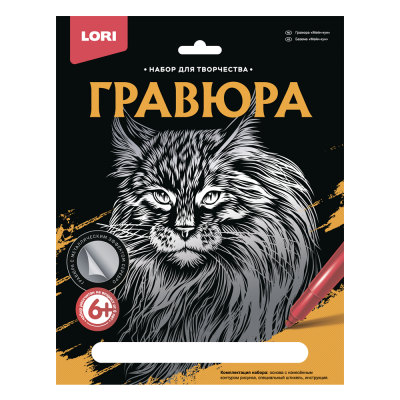Cockfighting has long been a controversial sport, steeped in tradition and culture while simultaneously facing criticism for its ethical implications. At the forefront of this age-old practice is AE888, a platform that has made it easier than ever to engage with this activity, whether as a participant or a spectator. The excitement surrounding cockfighting at Nhà cái AE888 combines the thrill of the fight with the camaraderie of community, making it an appealing avenue for many enthusiasts. In this article, we will explore the nuances of cockfighting at AE888, delving into its history, the breeding of fighting cocks, the competitive landscape, and the cultural significance of this timeless activity.
 Read more – Đá gà tại AE888
Read more – Đá gà tại AE888
The History of Cockfighting

Cockfighting is not just a modern-day spectacle; its roots can be traced back thousands of years across various cultures.
The historical journey of this blood sport reveals a layered tapestry of rituals, social gatherings, and even spiritual beliefs tied to the practice. Understanding the origins of cockfighting sheds light on why it remains such an enduring tradition even in the face of contemporary scrutiny.
Ancient Beginnings
The earliest records of cockfighting date back to ancient civilizations, including those of India, Persia, and Greece. It served as both a form of entertainment and a display of wealth and power.
Records suggest that the Greeks used fighting cocks as part of religious ceremonies, believing that the outcome of a match could be interpreted as an omen. This fascination with the sport soon spread throughout Europe and later the Americas, evolving over centuries as different cultures put their unique spin on it.
Cultural Significance
In many societies, particularly in Southeast Asia and Latin America, cockfighting transcends mere entertainment. It is often integrated into community life, serving as a social gathering point where people come together to share in the excitement, gossip, and camaraderie.
For some, owning and training a fighting cock can be a matter of pride and honor. Families often pass down knowledge and skills through generations, creating a lineage that adds depth to the sport. The cultural fabric woven around cockfighting at AE888 reflects this rich heritage, resonating with the emotions and memories tied to the birds and their handlers.
Legal Landscape
Interestingly, the legality of cockfighting varies greatly from one region to another. Some countries embrace it as a sanctioned sport, while others have imposed strict bans due to animal cruelty concerns.
At AE888, where digital platforms allow for broader participation, navigating these laws becomes increasingly complex. Participants must be aware of local regulations and ethical considerations, balancing their passion for the sport with responsible practices. As communities evolve and attitudes shift, the future of cockfighting is undoubtedly a subject worthy of discussion and analysis.
The Art of Breeding Fighting Cocks

Breeding the perfect fighting cock is more than a simple endeavor; it’s an art form that involves meticulous attention to detail and a deep understanding of genetics. At AE888, this aspect of cockfighting is highlighted, with top breeders sharing their insights and experiences.
The approach to breeding can make all the difference in the competitive arena. Factors such as lineage, temperament, and physical attributes are all considered before selecting a bird for training.
Lineage and Genetics
Knowing the lineage of a fighting cock is crucial. Breeders often look for birds that descend from champions, which increases the likelihood of success in the ring.
Genetics play a significant role in determining traits such as aggression, stamina, and resilience. By employing strategic breeding techniques, enthusiasts at AE888 often aim to create a lineage of superior fighters, refining each generation to enhance specific qualities.
Training Regimen
Once the right cock has been selected, the focus shifts to its training. Preparation for competition involves a comprehensive regimen that includes physical conditioning, specialized diets, and mental stimulation.
Handlers invest significant time and effort into training their birds, often employing techniques reminiscent of those used in traditional sports. Aspects of agility and strength are prioritized, ensuring that each bird is physically capable of enduring the rigors of combat.
Nutrition and Health
Nutrition is another critical factor in preparing fighting cocks. At AE888, members frequently discuss optimal diets that enhance performance. A well-balanced diet is essential for maintaining peak physical condition.
Additionally, health management plays a pivotal role in ensuring that the birds are free from disease and injury. Regular veterinary check-ups and vaccinations are standard practices among responsible breeders, reinforcing the notion that successful cockfighting is rooted in the well-being of the animals.
The Competitive Landscape at AE888

One of the most thrilling aspects of cockfighting at AE888 is the competitive scene, where participants showcase their best birds in high-stakes matches. Understanding the dynamics of this competitive environment sheds light on what makes it so captivating for both participants and spectators alike.
From betting opportunities to the thrill of victory, the competitive landscape is a multifaceted realm that draws people from diverse backgrounds.
Types of Competitions
At AE888, various types of competitions cater to different levels of expertise and interest. Whether it’s local tournaments or grand championships, there is something for everyone.
These events often attract large crowds, showcasing not only the birds but also the skill of their handlers. The atmosphere is electric, filled with anticipation and excitement as spectators cheer for their favorites.
Betting Culture
Betting is an integral part of the cockfighting experience at AE888. It adds a layer of excitement, as fans place wagers on their chosen birds, hoping to cash in on their predictions.
This betting culture fosters a sense of camaraderie among participants and spectators alike. Conversations about odds and strategies often spark lively debates, helping to build community bonds. However, responsible gambling practices are essential to ensure that the fun doesn’t overshadow the integrity of the sport.
Spectator Engagement
The role of spectators in cockfighting cannot be overlooked. At AE888, live-streaming and real-time updates allow fans to participate from the comfort of their homes or gather in communal spaces to enjoy the action together.
Engagement goes beyond mere observation; spectators often become emotionally invested in the outcomes, celebrating victories and mourning losses alongside their favorite handlers. This shared experience creates lasting memories and connections, enriching the cockfighting culture.
The Ethical Debate Surrounding Cockfighting
As we explore cockfighting at AE888, it’s impossible to ignore the ongoing ethical debate surrounding the practice. Critics argue against the morality of animal fighting, citing concerns over cruelty and exploitation, while supporters emphasize the cultural significance and traditions tied to the sport. This duality creates a complex landscape that merits thoughtful examination.
Arguments Against Cockfighting
Animal welfare advocates argue that cockfighting inflicts unnecessary harm on birds, presenting significant ethical dilemmas. They point out the physical injuries sustained during matches and the psychological stress imposed on the animals.
The use of sharp blades, known as gaffs, adds another layer of cruelty to the practice, leading many to condemn cockfighting outright. Proponents of animal rights often call for stricter legislation to prevent animal cruelty, arguing that there are alternative forms of entertainment that do not involve harm.
Support for Traditional Practices
On the other hand, supporters of cockfighting argue that it is an intrinsic part of their culture, representing a heritage passed down through generations. For many, the sport embodies values of strategy, respect, and community bonding.
Advocates believe that with the right regulations and ethical standards in place, cockfighting can continue as a sustainable practice that honors tradition while being mindful of the animals involved.
Finding a Middle Ground
The discussion around cockfighting continues to evolve, and finding common ground between both sides is essential. Organizations may consider implementing guidelines that prioritize the health and well-being of the birds while still allowing the sport to flourish.
At AE888, discussions regarding ethical considerations are becoming increasingly prevalent, encouraging participants to reflect on their roles within the community and how they can contribute to a more humane practice.
FAQs
What is cockfighting?
Cockfighting is a blood sport that involves two roosters battling in a ring, usually with bets placed on the outcome of the event.
Is cockfighting legal everywhere?
No, the legality of cockfighting varies by location. Some countries and states permit it under specific regulations, while others have banned the practice altogether.
How are fighting cocks trained?
Fighting cocks undergo extensive training regimens that include physical conditioning, specialized diets, and tactical preparation to enhance their performance in the ring.
What ethical concerns surround cockfighting?
Critics argue that cockfighting inflicts unnecessary harm on animals, raising issues of animal cruelty. Supporters contend that it is a cultural tradition that can be carried out responsibly.
Can I participate in cockfighting at AE888?
Yes, AE888 provides a platform for participants to engage in cockfighting, whether through betting, training, or attending events, provided they adhere to relevant laws and ethical guidelines.
Conclusion
Cockfighting at AE888 serves as a microcosm of a larger global conversation surrounding the sport’s historical significance, ethical implications, and cultural relevance. As enthusiasts continue to navigate the complexities of tradition and modernity, the future of cockfighting will undoubtedly rely on a delicate balance between honoring its past and adapting to new societal values. Whether viewed as a thrilling spectacle or a contentious topic, cockfighting remains an enduring element of human culture, reflecting our diverse beliefs and practices across the globe. As we move forward, continued dialogue and responsible engagement will be key in shaping the future of this age-old sport.
